Chief of Space Operations Gen. John W. “Jay” Raymond spoke at the Air Force Association’s Air, Space & Cyber Conference on Sept. 21, addressing a packed auditorium in National Harbor, Md. Here is a video of his remarks.
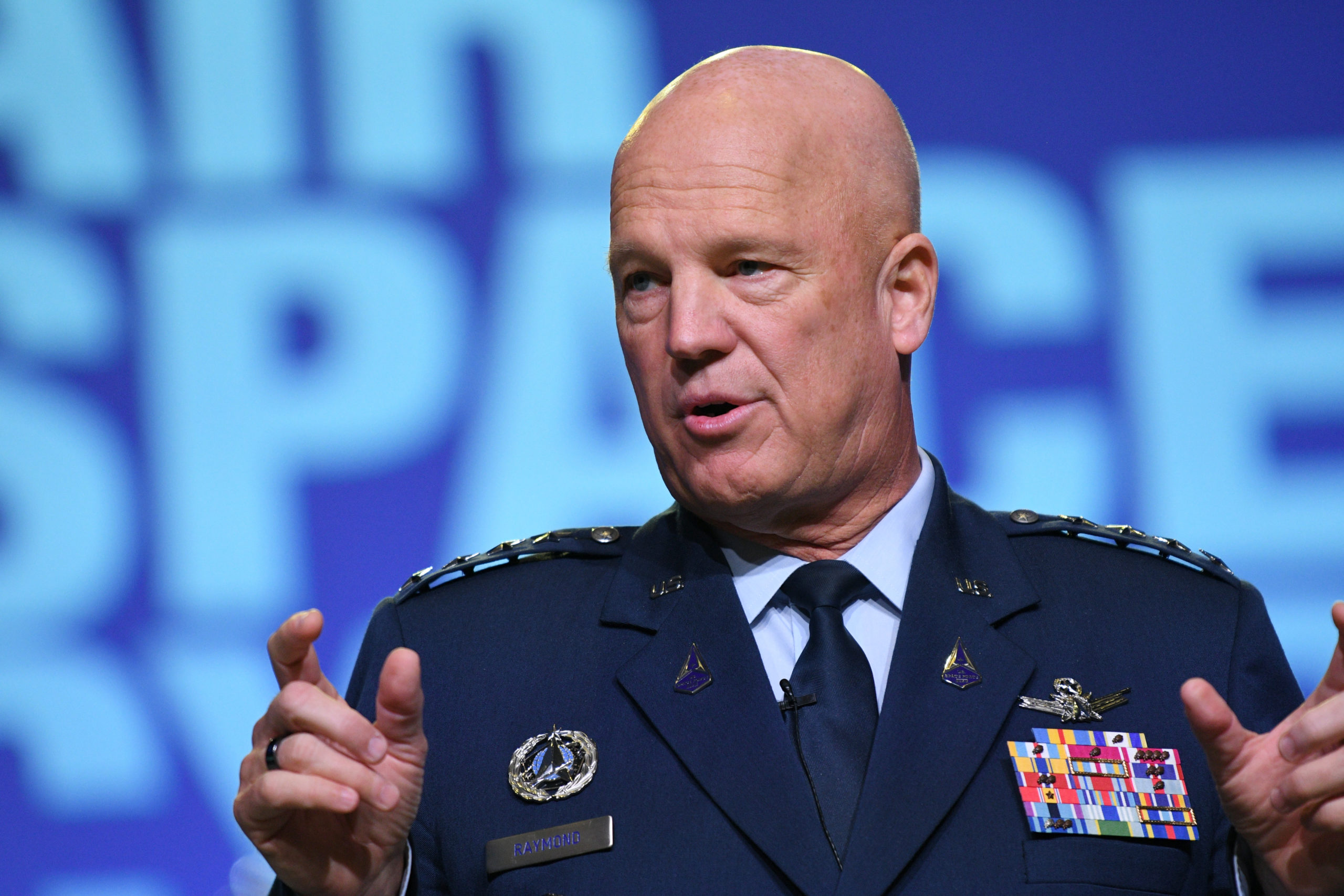

Chief of Space Operations Gen. John W. “Jay” Raymond spoke at the Air Force Association’s Air, Space & Cyber Conference on Sept. 21, addressing a packed auditorium in National Harbor, Md. Here is a video of his remarks.
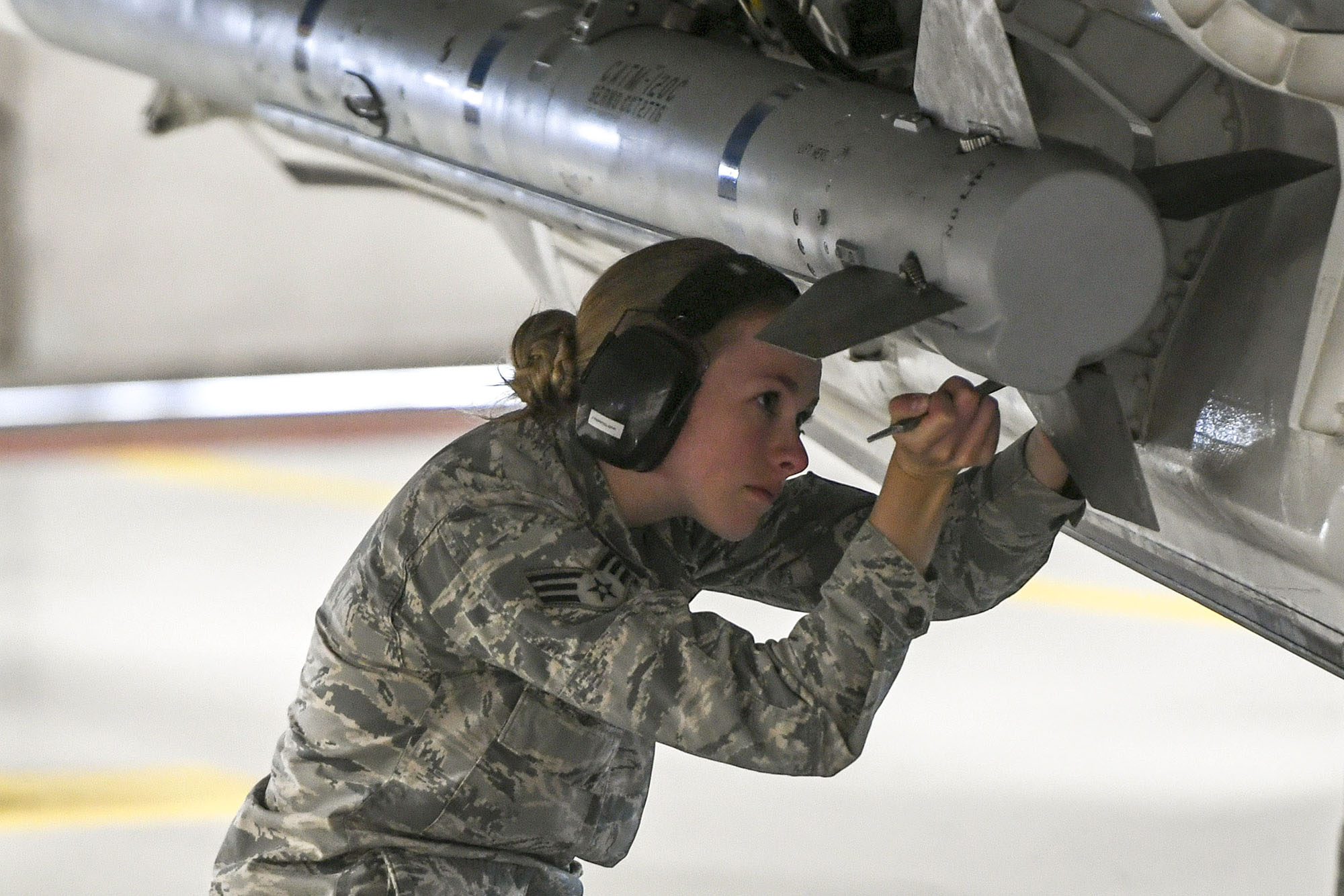
The range of current Air Force weapons compels pilots of stealth aircraft to get too close to their targets, risking that they’ll be seen and shot down, Air Combat Command boss Gen. Mark D. Kelly said Sep. 22. The service must have longer-range “fifth-generation weapons” to go with its fifth-gen combat aircraft, he said.
“We [take] a lot of bang out of our low-observable force because we push them into ranges where everyone”—even stealth aircraft—“is observable,” Kelly told reporters during a press roundtable at AFA’s Air, Space & Cyber Conference. That means “we’re not going to get a good return on our investment” in fifth-gen or better fighters. Fifth-generation weapons “allow us more range, whether it’s new air-to-air or air-to-ground,” he said. The Air Force considers its F-22, F-35, and B-2 bombers to be “fifth generation” systems.
“I’m happy if it moves fast,” he said, because “any time we pull the trigger … we have to assume the target’s going to move between the time [the weapon] leaves the rail and the time it shows up at the target. And hypersonics and closer range shorten that time of flight.”
But, “it’s not exclusively hypersonics. We just have to make sure we can reach out and touch folks at a range that is equal to or exceeds their ability to reach out and touch us.”
The longest-range dogfight weapon in USAF’s inventory is the AIM-120 Advanced Medium Range Air-to-Air Missile, which Kelly noted goes back more than 25 years.
“The AIM-120 we have today is significantly improved, in all fairness,” he admitted, “but we’ve squeezed most all we can out of that capability.”
The People’s Republic of China Army Air Forces already field an AMRAAM-like weapon, the PL-15, with much longer range than AMRAAM, negating much of USAF’s so-called “first look, first shot” advantage. That prompted the Air Force to pursue the AIM-260 Joint Advanced Tactical Missile, a new dogfight weapon.
The AIM-260 “gets us there” in terms of range, Kelly said.
The Air Force needs to take an “enterprise-wide solution” to its weapons, Kelly said. Not doing so poses the “greatest risk to the fighter force.”
Kelly explained that “when we field any kind of capability, it has to be an enterprise-wide solution. And so … if you field a fifth-gen asset—a fighter, bomber, ISR, etc.—and you don’t have fifth-gen sustainment, and you don’t have fifth-gen Airborne Moving Target Capability, and you don’t have fifth-gen weapons with it, that rate-limits the capability of that weapon system. It just does.”
The AIM-260 isn’t the end solution to air dominance, though, Kelly said.
“We can’t take our eyes off the follow-on capability,” he insisted. “Our adversaries do not sequentially develop and design weapons.” While China is developing a near-term weapon, work is already well underway on “multiple lines” of potential successors, Kelly said.
“We can’t, sequentially, heel to toe, start working on solving Problem A and not even eyeball Problem B. We’ve got to keep looking forward,” he said.
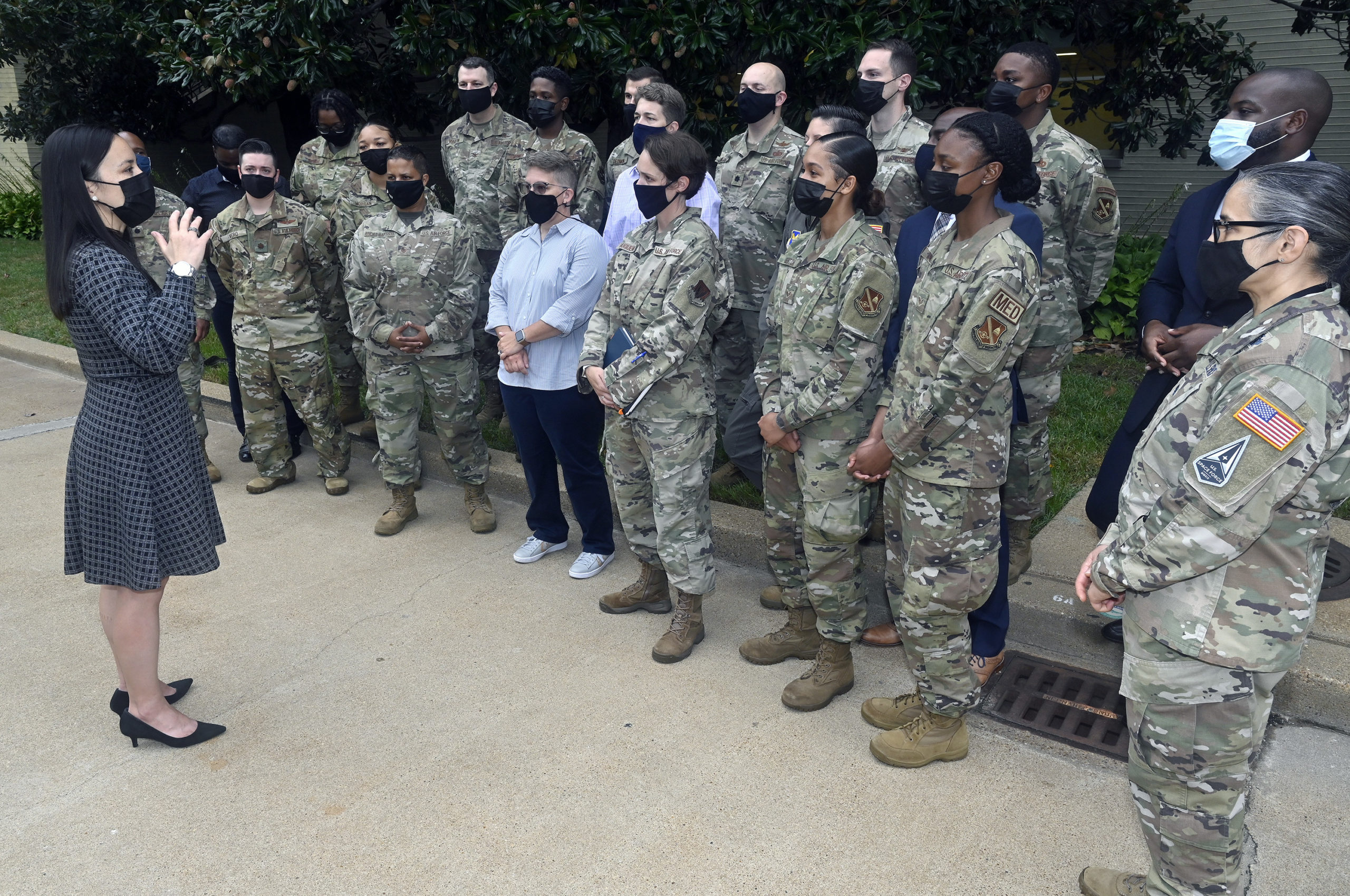
Undersecretary of the Air Force Gina Ortiz Jones recently gathered service members in the Pentagon courtyard to take a photo commemorating the 10th anniversary of the repeal of “don’t ask, don’t tell,” but she was surprised by the age of those present: They did not seem old enough to have served under the policy that silenced gay service members.
“When I showed up, I was like, ‘Oh, some of these folks look pretty young,’” Ortiz Jones recounted during a panel on developing the next generation of Guardians and Airmen at the Air Force Association’s Air, Space & Cyber Conference in National Harbor, Md.
“My team told me, ‘Actually, the vast majority of these folks wanted to be part of this picture because … they joined because ‘don’t ask, don’t tell’ was repealed,” said Ortiz Jones, a member of the LGBTQ community who, in order to keep her Air Force ROTC scholarship, was forced to sign an agreement promising not to engage in homosexual behavior. On Active duty in the Air Force from 2003 to 2006, she deployed to Iraq as an intelligence officer and served under the policy.
Ortiz Jones told the story as an example of department policies that could be changed or modified to attract and retain diverse talent.
Ortiz Jones, along with panelists retired Gen. Edward A. Rice Jr., who served as commander of Air Education and Training Command from 2010 to 2013; Space Force Chief Human Capital Officer Patricia Mulcahy; and Lt. Gen. Brian T. Kelly, Department of the Air Force deputy chief of staff for manpower, personnel, and services, made the case that diversity and inclusion in recruiting, retention, and promotion are necessary to confront America’s adversaries.
“We need talent as diverse as the opportunities and challenges we face as a country,” Ortiz Jones said. “The threat, our ability to address that, is certainly based on the talent we have within our Space Force and our Air Force.”
Air Force leaders on Sept. 16 discussed the results of a racial and gender disparities survey released by the Air Force inspector general that found wide disparities in recruitment, retention, and promotions affecting women, Asian Americans, Native Americans, Latinos, and Pacific Islanders. The study followed a December review that had identified many of the same inequities for Black Airmen.
Kelly expanded on the idea of inclusiveness and dismissed claims that recent changes to physical fitness testing requirements lower female standards in the interest of gender diversity.
“We’ve done the work, we’ve had a scientific team come in and help us work through that,” he said of the new options the Air Force is offering as options to replace sit ups and a mile-and-a-half run.
As to new allowances for women to wear their hair in ponytails, braids, and down, Kelly made a joke about China’s People’s Liberation Army.
“As if there’s some generals over in the PLA who are going, ‘We’ve got ‘em now, they’re letting their women wear their hair down,” he said.
“What they’re probably more … excited about is if we have policies that do not allow us to maximize our potential, right? Do not allow us to maximize the talent that we can bring in,” he said. “The power and strength of America is our diversity.”
Mulcahy said the gender gap in the Space Force is among the largest in the services, with just 19 percent women.
“We see this as an issue in the Space Force,” she said, noting the Space Force will recruit far fewer Guardians than the Air Force will Airmen, some 400 compared to the 27,000 the Air Force will intake. “So, we should be approaching things a little bit differently.”
Mulcahy called for the Space Force to take a closer look at medical exemptions and other potential policy changes.
“We, being as small as we are, could take a look at making use of those policies and granting exceptions,” she said.
Kelly brought the argument about diversity back to making the force stronger:
“If we were less inclusive and less diverse, and that led to us being a less talented Air Force, then I do think there are generals in the PLA who are celebrating going, ‘Good, let them operate that way.’”
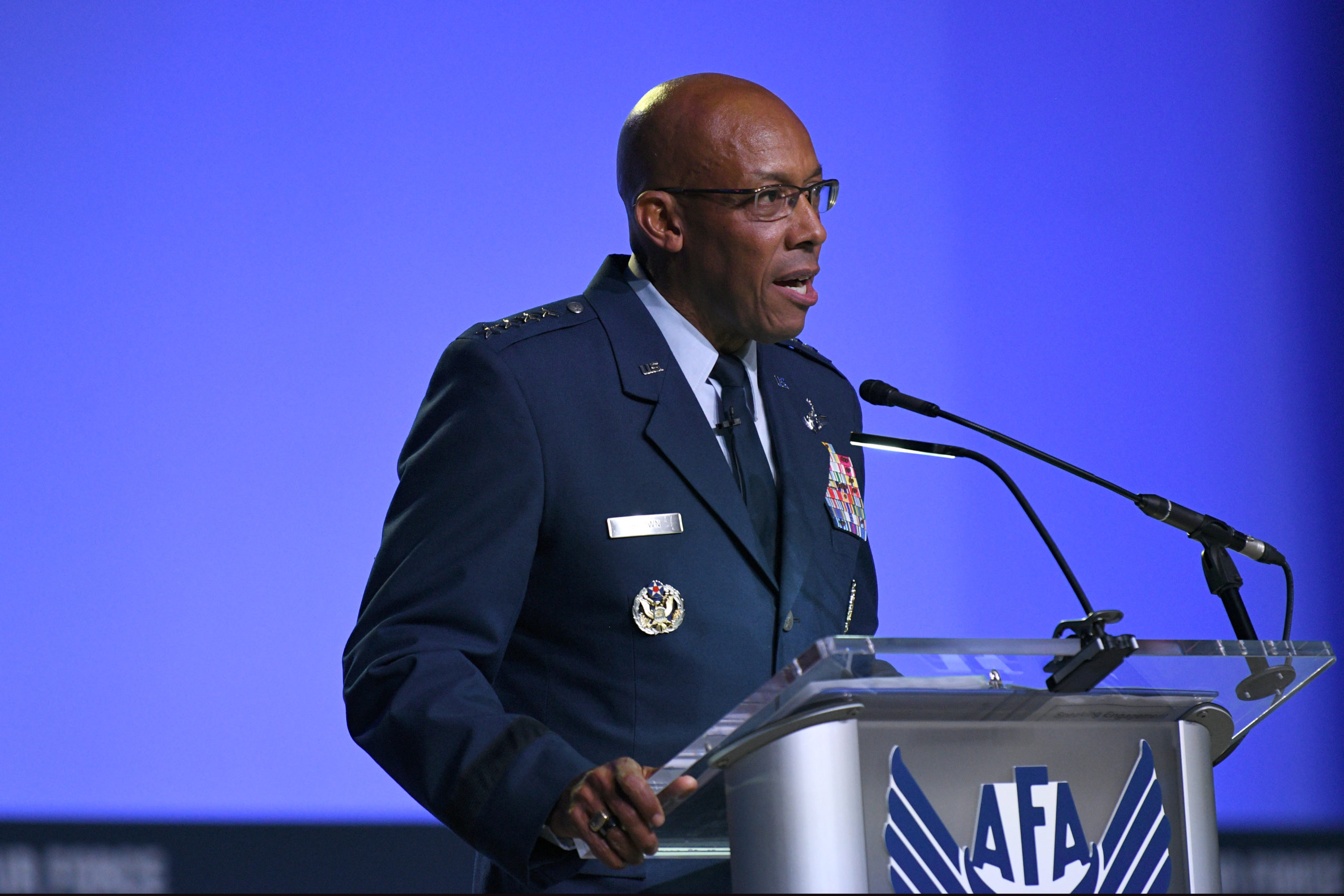
The Air Force’s pilot production numbers stayed relatively steady from fiscal 2019 to 2020 despite the COVID-19 pandemic, Chief of Staff Gen. Charles Q. Brown Jr. said, an encouraging sign that the service’s efforts to speed up that pipeline are working.
“Our numbers didn’t really drop as far as production,” Brown said in a media roundtable at AFA’s Air, Space & Cyber Conference on Sept. 22. “In fact, they were really close, within about 10 or so. So that to me is a good indicator that we’re actually making some progress, even with COVID.”
In 2019, the Air Force produced 1,279 new pilots, according to a report from Air Force Times. In 2020, that number was 1,263, Stars & Stripes reported, with the number expected to increase by roughly 100 in 2021, Lt. Gen. Marshall B. “Brad” Webb said.
That progress could be especially key in the next few years. While the pandemic isn’t over yet, commercial airlines have expressed optimism about a rebound in travel and their long-term futures. Growth for those companies would mean more competition for pilots, which has caused shortages for the Air Force in the past—the pandemic provided a little relief on that front, with civilian jobs drying up and many pilots staying in the service. Indeed, United Airlines CEO Scott Kirby, who also spoke at the conference, has warned of a looming pilot shortage for both commercial industry and the military.
Part of solving the production issue, both Brown and Kirby said, will be providing opportunities for those who wouldn’t typically get the chance to ever train as a pilot. In the military, Brown said, that means changing the pilot candidate scoring mechanism so that private flying hours will only be rewarded up to 60 hours. On the commercial side, Kirby said United is taking a similar approach with its flight academy, looking to identify candidates with no flying experience.
“[Outside of the military], you kind of have to get your parents to spend $150,000 to get you enough hours to kind of get to the point where you can start the pilot [career path],” Kirby said. “There’s very few people who have the opportunity to do that.”
Approaches like that, the two men agreed, will be key for everyone.
“As the airline issue starts to open back up, that’ll be something we’ll have to continue to work on. And I think we have to work it as a nation, because this is a key skill set,” said Brown.
For the Air Force, the change to the scoring mechanism is just one of a raft of changes that Air Education and Training Command is making to address the racial disparity among its pilots, a disparity that limits the number of candidates. The other changes allow candidates to:
Brown also touted other initiatives and changes that the service has made in the past few months and years, among them Undergraduate Pilot Training 2.5 and Helicopter Training Next, aimed at reducing the amount of time the Air Force needs to train pilots.
The service is also looking to be more flexible in its training—civilian simulator instructors can now monitor the simulations remotely; students who are excelling now have the ability to graduate from pilot school early; and training courses can be tailored based on what skills students master fastest.
“Instead of having a kind of a road system that basically says, this is the same approach for every single candidate that comes through pilot training, [we’re] able to use some of the data and look at the ability. If you absolutely master a skill faster, … we can kind of tailor the training you get, so that by the end, you get everything you need. And that takes a little bit of artificial intelligence using data,” Brown said.
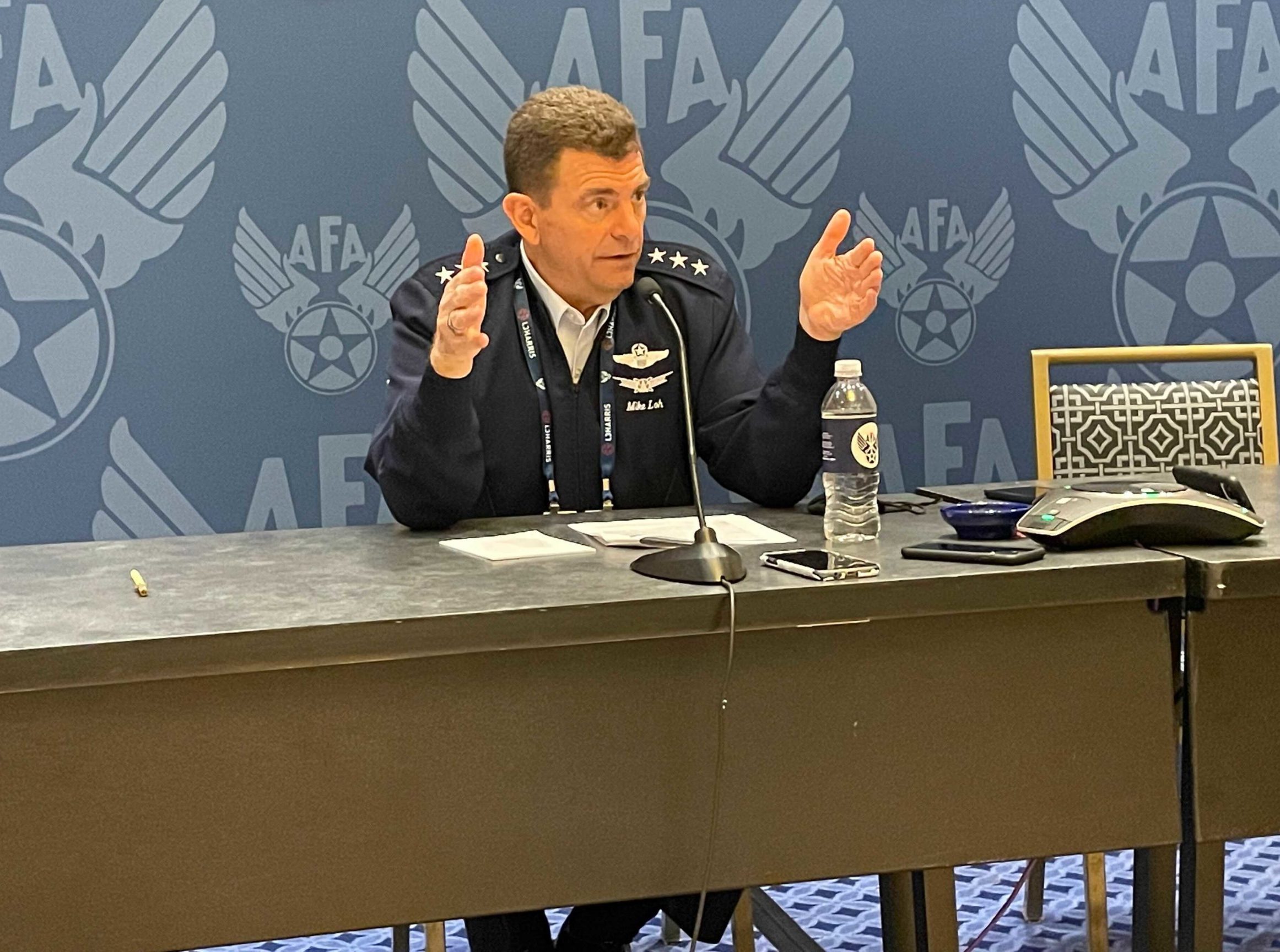
While a congressional debate brews about the future of a potential Space National Guard, the officer who currently oversees the National Guard’s space units is living in a little bit of limbo.
Lt. Gen. Michael A. Loh, Air National Guard director, is on the record as supporting a separate Guard component for the Space Force, which was established in December 2019 with no Guard or Reserve. Back in February 2020, when he was the adjutant general for the Colorado National Guard, Loh said he couldn’t see “how we have a Space Force without a Space Guard.”
Since then, other military leaders have expressed a preference for a Space National Guard and developed plans for one. But the issue was thrown into doubt when Congress started debating the 2022 National Defense Authorization Act. The Senate Armed Services Committee approved its markup of the bill, which would simply change the name of the Air National Guard to the Air and Space National Guard. The House Armed Services Committee, meanwhile, adopted an amendment establishing an entirely new Guard. Both bills have yet to be approved by the full chambers, but presuming they are, negotiators will have to resolve the issue in conference.
Then, on Sept. 21, the White House’s Office of Management and Budget released its statement of administration policy on the NDAA, in which it said it “strongly opposes” the creation of a separate Space National Guard, saying the new component would create unnecessary bureaucracy and increase costs by up to $500 million annually.
With those political entities all wrangling, Loh, speaking at AFA’s Air, Space & Cyber Conference on Sept. 22, said he’s stepping back from the issue.
“I am awaiting somebody else’s decision. It’s above me,” said Loh. “We’ll see what happens as those three groups get together and decide if they’ll create a Space National Guard.”
Loh did, however, take issue with the notion that a new Guard would create more bureaucracy. At the moment, he said, the Air National Guard’s units with space missions have Air Force Speciality Codes that no longer exist, because those jobs have been transitioned over to the Space Force. With no direct connection to Active-duty units that share their missions, problems arise.
“There are some gaps that have occurred because of this,” Loh said. “It’s training, it’s exercises, … and the workaround, quite frankly, is actually establishing a bigger bureaucracy.
“Because the streamlined bureaucracy goes through to the bigger bureaucracy [and says], I have to translate Space Force requirements into Air Force requirements, get it funded through the lead MAJCOM, which is Air Force Materiel Command, … and then I have Air National Guard space professionals on a space weapon system in [U.S. Central Command].”
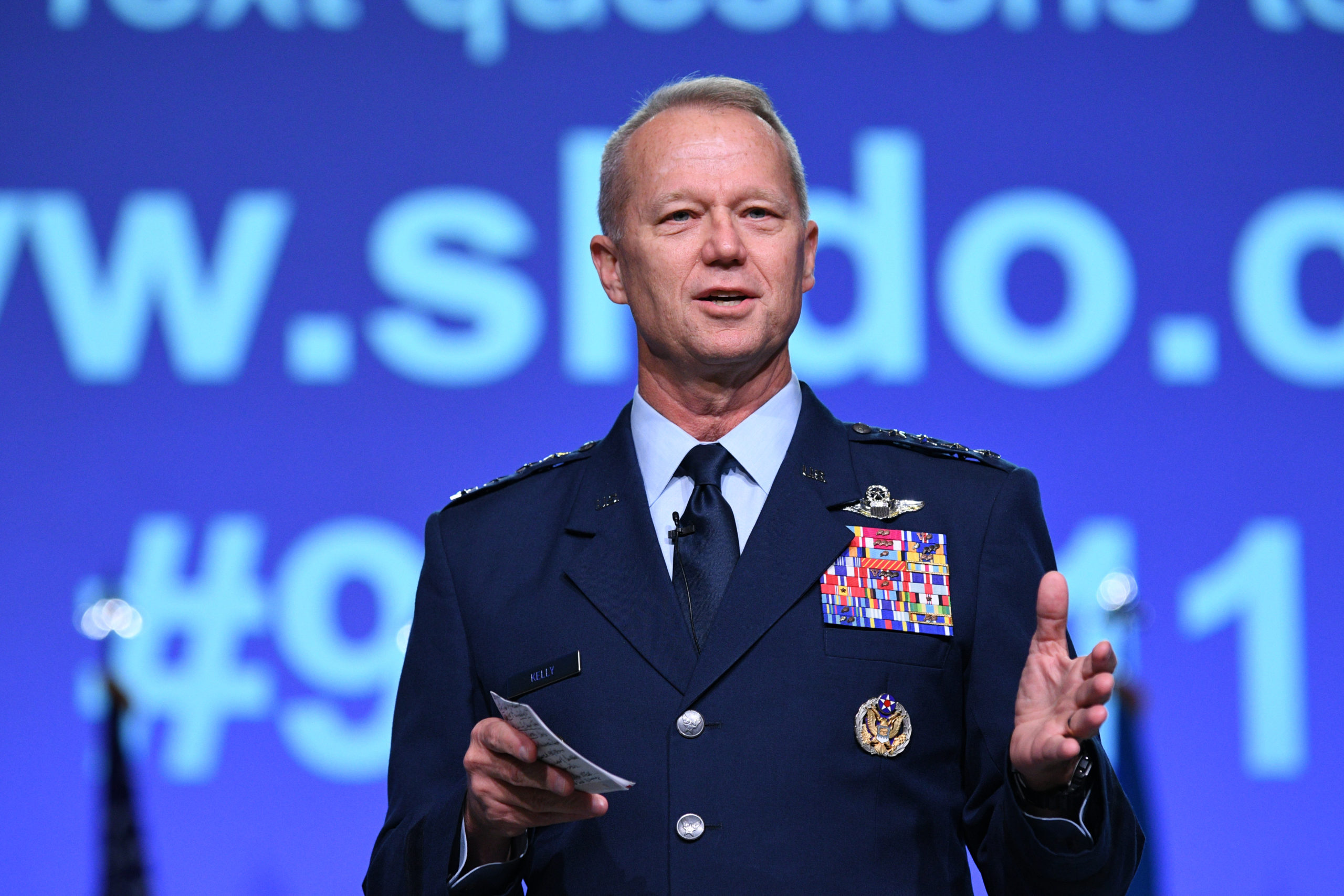
The U.S. is in real peril of losing a potential war with China if the Air Force cannot shed obsolete gear and rapidly regain a solid advantage in control of the air, Air Combat Command’s Gen. Mark D. Kelly told attendees at AFA’s Air, Space & Cyber conference.
“We have to focus our fighter force to the basic realities of a new threat environment,” Kelly said in his ASC21 speech. “And that requires the fighter force to change to be successful.” Kelly said the joint force “requires air superiority” and doesn’t know how to fight or function without it—so this mission area should get priority for resources.
Kelly explained the the “four-plus-one” concept for the future fighter force—an improved F-22, making a “hot handover” to the Next Generation Air Dominance circa 2030; the F-35 as the “cornerstone” of the fleet; the F-15E and F-15EX as “big weapon” carriers; F-16s to provide capacity, especially in lower-end conflicts; and the A-10 as the “plus one,” with a fleet of 218 airplanes for close air support that sunsets in the early 2030s.
Incremental change will not keep the Air Force ahead of its Chinese counterparts, he said.
“You don’t just wake up one day and find yourself in the ‘lose’ column.” First, he said, the force finds itself increasingly in the “irrelevance” category, which is where USAF will be if it doesn’t retire legacy systems that no longer intimidate China. China is the “apex peer adversary” with vast capabilities in electromagnetic spectrum operations, Kelly said, and USAF could lose such a fight.
“The fighter roadmap represents change,” he said. “If you don’t like change, you’re really going to dislike ‘irrelevant.’ … If you don’t like irrelevant, you’re really not going to like defeat.”
The “cold, hard realities” are that the Air Force was superbly prepared and trained to defeat a peer adversary—Russia—30 years ago, then achieved a highly lopsided victory in Iraq, Kelly said. But in the last 20 years, USAF was optimized for combat in a “permissive environment” that didn’t test the force. During that same time, China was focused completely on “the high-end fight, and fighting us.”
China’s force structure and systems are “designed to inflict more casualties in the first 30 hours of combat than we’ve endured over the last 30 years in the Middle East,” Kelly said.
As the Air Force inventory has aged and diminished, the balance with China has tilted more toward Beijing, he added. Kelly said Russia has been able to annex Crimea and China has claimed parts of the South China Sea “without firing a shot” because contesting those situations has become harder thanks to adversary air defenses.
To regain the advantage—“to be a resolute world power”—the U.S., through its Air Force, has to be able to penetrate “highly contested sovereign [airspace],” Kelly asserted. China’s mastery of the EMS must also be challenged, he said.
Paraphrasing British Gen. Bernard Montgomery, Kelly said, “If we lose the war in the electromagnetic spectrum, we lose the war in the air, and we lose it quickly.” China’s EMS capability threatens to “break the Blue kill chain,” he said.
China is also “not debating the value of sixth-generation air superiority” within its senior leadership, he said, to the point where there is a “government ministry” dedicated to obtaining sixth-gen capabilities and wresting air dominance from the U.S.
If China gains sixth-gen capabilities before the U.S. Air Force, “it will not end well,” he asserted, adding, “Air superiority is a terrible place to receive a silver medal.” The U.S. should consider regaining air superiority “with margin” as its top military priority, deserving of a “kind of Manhattan Project” focus, funding, and emphasis.
The NGAD tops Kelly’s list of critical ACC fighter requirements, followed by the F-35, which “must have” the Tech Refresh 3 upgrade and Block 4 Suite of improvements, he said. The F-15E and F-15EX provide near-term capacity but have to have significant electronic warfare upgrades, Kelly said. The F-16 also “addresses risk” by providing capacity, and it, too, must have electronic warfare improvements.
Kelly dismissed talk of “F-35 vs F-15EX,” insisting, “I need both.”
Retaining more A-10s than needed, however, “takes us off the road” to a modernized Air Force and displaces capabilities the service needs to win, Kelly insisted.
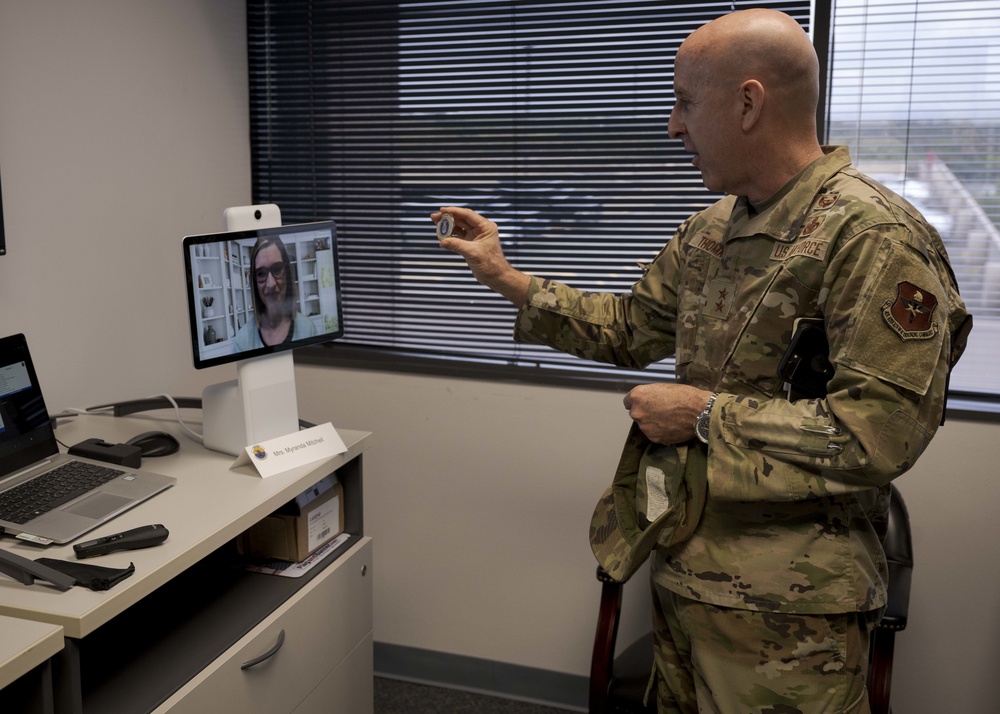
For the first time in more than five years, the Air Force Recruiting Service is on target to meet its goals for the entire department, the unit’s commander said Sept. 22. At the same time, trends indicate a challenging future for the Air and Space Forces as they go after the next generation of Airmen and Guardians.
With just a few days left in fiscal year 2021, the Active-duty Air Force, Air Force Reserve, Air National Guard, and Space Force were on the verge of hitting their total goal of 42,000 additions, Maj. Gen. Edward W. Thomas Jr., head of AFRS, told reporters at AFA’s Air, Space & Cyber Conference.
For the regular Air Force, this is nothing new—the Active-duty component has met its recruiting goals every year since 1999, Thomas said. But the Air Force Reserve and Air National Guard have had less success in recent history. In particular, the Air Force Reserve missed its goal in each of the past five years, and the challenging circumstances of the past year made reaching its goal even more impressive.
“The reason why, for five years, it’s been hard to make goal, is it is a very complex orchestration of how we gain people in the Air Force,” Lt. Gen. Richard W. Scobee, chief of the Air Force Reserve, told reporters in a different roundtable. “So if less people are getting out of the Active component, it’s harder for us to make our numbers.”
With the uncertainty of the COVID-19 pandemic, retention in the Active-duty ranks has been high, but Scobee credited the stability of the Reserve and its ability to work through the pandemic as key.
“Have to say, I’m pretty excited about making end strength for the first time in my tenure,” Scobee said.
The success, however, may be hard to continue long term. Thomas cited a report from Joint Advertising Marketing Research & Studies, or JAMRS, that found that just 11 percent of American youth reported a desire to serve in the military, down from 13 percent. And that decline is not an anomaly, Thomas said.
“The long-term trends are concerning. And the reason is America’s youth are becoming ever more disconnected from the military,” said Thomas. “I can go into all the reasons why … smaller military, bigger population, less moms, dads, aunts, and uncles, people who serve people, people they know. So we have to be really serious about playing the long game.”
To that end, Thomas said, AFRS is working to understand Gen Z—young people born between 1997 and 2012—as the main generation that will be joining the Air Force and Space Force for years to come. And in doing so, they’ve already drawn some conclusions.
“This is a group of folks that, there’s things that motivate them differently than the prior generations,” Thomas said, adding that their guiding ethos is, “I want my work life and the things I do to be able to line up with what I believe personally, my personal life. So I need my nine to five to be … more closely aligned with my five to nine.”
As a result, Thomas said, the service’s advertising focus has shifted. There are still images and videos of kinetic attacks and fighter jets. But there’s also a new message: “Don’t just make your mark, make many. Come make a difference.”
That big-picture, philosophical approach also has to be balanced by practical concerns. Because fewer young people have regular contact with the military, their questions are often basic, said Barry Dickey, director of marketing for AFRS.
“Can I have a dog? Can we date? … We got a whole section on our website dedicated to “Ask an Airman,” Dickey said. And what we’ve discovered is that Generation Z doesn’t want any fluff. They want to hear it straight from an Airman.”
That strategy can lead to some less-than-flattering answers, Thomas and Dickey admitted. But the philosophy is that long term, transparency on issues will help with both recruiting and retention.
“[Ask an Airmen] will tell you the good, the bad, and the ugly,” Dickey said. “And we put that out there because we want to be truthful in all of our messaging. We know that that resonates with the audience that we’re after.”
Some of the issues are more trivial—it can be cold on the flightline, Dickey acknowledged with a laugh—but others are more serious. Questions about sexual harassment and assault, as well as racial and ethnic discrimination in the ranks, are hard topics that have left an impact, especially in recent years when protests against racial inequality and reports of high sexual assault rates have received significant attention.
“The JAMRS study definitely indicated sexual assault, racial disparity, … are areas that cause us concern,” Thomas said.
There’s only so much the Air Force can do about that, given the public and high-profile nature of these issues in the ranks.
“The challenges that we have as a Department of Defense is that the speed of information can be pretty powerful,” Chief Master Sgt. of the Air Force JoAnne S. Bass said in a separate roundtable. “And so for every good story that we have on the military, on the greatness that we provide all Americans, there’s 15 of the articles that come out that say otherwise, that there are sexual assaults occurring, that we are not taking care of Airmen and families when it comes to domestic violence.”
In the end, though, Thomas expressed optimism that transparency will work as a long-term strategy, both for the overall force and for AFRS.
“We’re very honest and very transparent about where some of our problems are and our barriers are. … There can be a short-term, negative impact on recruiting,” Thomas said. “In the long term, though … we do believe that the long game here is, we expose our problems. We deal with them, and we move on, and we get better for it. And then in the long game, our recruiting is going to benefit from the transparent approach that we are taking.”

Using new digital methods to design a future Air Force fighter costs more than the traditional approach, but subsequent iterations could be done faster and less expensively, senior Air Force officials said Sept. 22. They also cautioned that the “Digital Century Series” is not synonymous with the Next Generation Air Dominance program and that no decision has been made about whether to take the approach on an NGAD successor.
The results of the Air Force’s business case analysis of the Digital Century Series approach to combat aircraft design differs from that developed by the Pentagon’s Cost Analysis and Program Evaluation shop, top uniformed USAF acquisition official Lt. Gen. Duke Z. Richardson told reporters Sept. 22. The CAPE’s numbers were higher than the Air Force’s but were highly subjective anyway, he said, because assumptions play a central role in defining costs.
“The differences … are in assumptions about [operations and sustainment] costs, and O&S cost avoidance,” Richardson said. “Another one is in the area of O&S cost growth; in other words, how much you project … the sustainment costs [will be], including manpower. The third area would be the time period of analysis.” The results of any business case analysis are “really sensitive to those assumptions,” he added, and “the assumptions are hard to make; … where do you stop? A traditional program might be on a 30-year-plus cycle, whereas the Digital Century Series system might be on a 16-year cycle. So these are multiples of each other.”
The Digital Century Series was a coinage of former Air Force acquisition executive Will Roper, who suggested that quick-turn design and production of new combat aircraft every few years—produced in lots of 50-100 before being superseded by the next design—would keep the fleet fresh and hold down sustainment costs, because the aircraft would be rapidly retired when their technology grew stale.
Air Force Secretary Frank Kendall told Air Force Magazine that Roper’s ideas of what could be saved with the Digital Century Series were “highly optimistic” and agreed that CAPE’s estimate was higher than the Air Force’s, but the two organizations also applied different assumptions about the sustainment period. The CAPE’s analysis was that traditional methods cost “about 10 percent less” than digital. But digital allowed a quicker revisit of the design, and future iterations were less costly, he said.
Richardson acknowledged that CAPE’s cost estimates were higher, but added that the exercise wasn’t without value.
The Digital Century Series approach was “not an order of magnitude more expensive” than traditional methods, Richardson said. Roper’s approach also aimed to “keep the industrial base active and refreshed, being in the … design phase all the time.” There’s a “performance bump-up you get if you’re constantly refreshing your platforms. So, we think it has merit … We’re not flushing it.”
The CAPE results verified “that there’s merit to the idea,” he said. “What I like about the Digital Century Series approach—and the way we’re approaching [the Next-Generation Air Dominance program]—is that there’s always an option of doing that. That’s the beauty of it. It’s a few years out … The good news is, it’s not a decision we would need to make right away, but those assumptions do drive a lot of the results.”
In the near term, “we continue to focus on that first NGAD ‘mission design series,’ if you will, and we’ll make that other decision later.” Richardson noted, “The threat gets a vote, and also I would guess that if we were to start that second series, we would certainly look at the threat and … whether the threat warranted starting a second series early.”
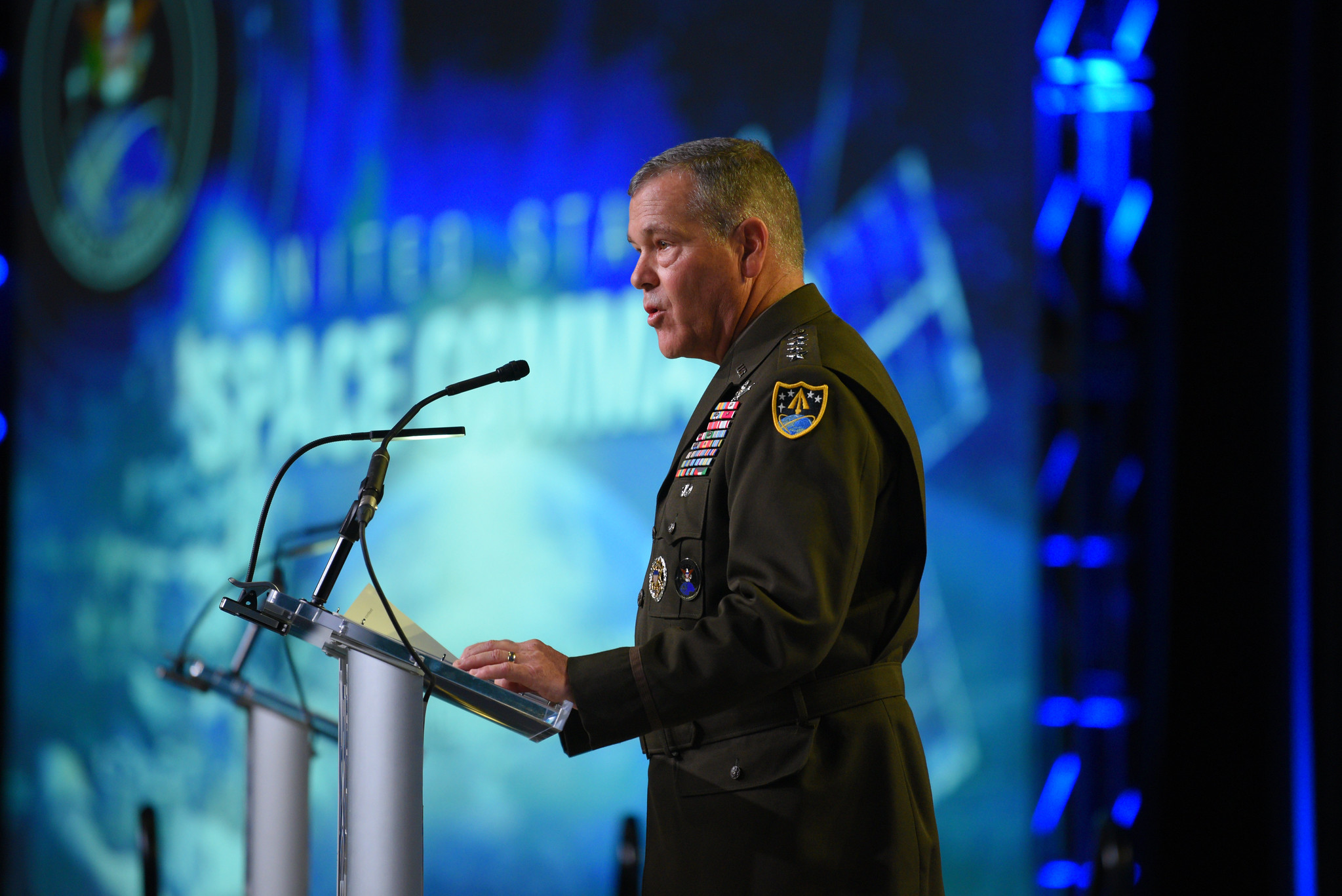
The U.S. military plans to “be there” for NASA and commercial providers of “critical” space capabilities as activity picks up on and around the moon.
Commander of the joint-service U.S. Space Command, Army Gen. James H. Dickinson, made the pledge during his speech at the Air Force Association’s Air, Space & Cyber Conference on Sept. 21.
Newly reestablished in 2019 as the military’s 11th combatant command, U.S. Space Command’s “two-part focus” includes “traditional, enduring, no-fail, supporting space functions like position, navigation, and timing, satellite communications, missile warning, and support [of] the human spaceflight operations” at NASA, Dickinson said.
He added that the Artemis program, NASA’s planned lunar exploration campaign, “presents an exciting opportunity” for the command.
“The United States is going back to the moon, and one day we’ll put an astronaut on Mars,” Dickinson said. “U.S. Space Command will be there for NASA in support of those efforts.”
On the other hand, the second, “extremely important” part of the command’s focus—its “supported warfighting function”—is wholly new, Dickinson said. This includes “conducting space operations and protecting and defending U.S., allied, partner, and critical commercial space operational capabilities.”
He didn’t name a specific threat but alluded to “irresponsible behavior of our competitors” generally understood to include anti-satellite weapons tests that create hazardous debris fields in orbit.
In the past few years, the number of satellites in orbit tracked by the U.S. has about doubled, Dickinson said. The trend has given rise to the discipline of space domain awareness, which is one tool the command is sharpening to perform its mission.
Dickinson said that unlike the activities of space situational awareness and space traffic management—“largely passive” and “designed to keep us informed on what’s occurring in space, and when it will occur”—space domain awareness looks at, “more importantly, why it’s occurring.”
Leaders within the command have said that in cislunar space in and around the moon, space domain awareness is its only mission for now.
U.S. Space Command announced in August that it had reached initial operational capability, or IOC, meaning it had “matured to the point where we have strategic effects,” Dickinson said at the time.
At the AFA conference, he elaborated that IOC is “the point where we’ve built a solid enough foundation to pivot to a new objective. It’s where we can credibly claim to be organized and effective for employing both our enduring no-fail support functions to the Joint Force and our supported warfighting functions as well.”